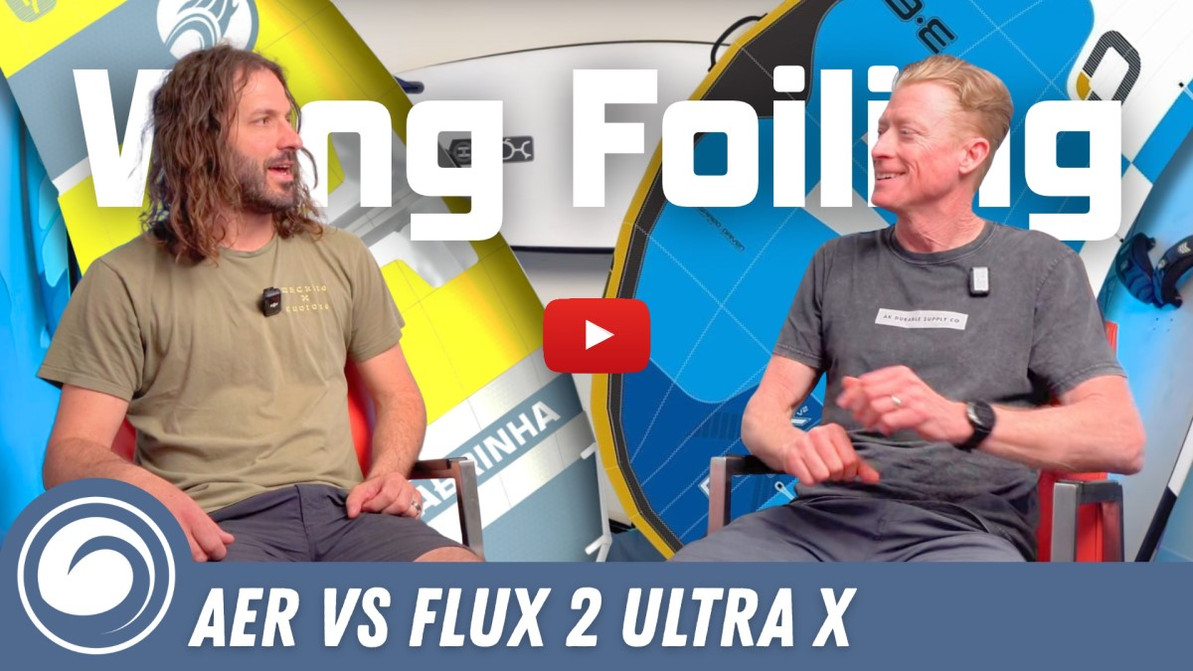Cabrinha AER vs. Ozone Flux V2 Ultra-X | Which Wing Feels Lighter in Hand?
A lot of the time, price gets overlooked as a factor when comparing products. Although we at MACkite usually bring it up to some degree in our blogs and videos since we talk to real customers every day and we understand the reality of having a budget, we're not completely blameless. After all, it can be hard to talk about the price when we're excited about an item that's using all the latest and greatest materials.
In this edition of "Versus", we're putting price front and center and are comparing two wings on the opposite end of that spectrum. A 5m Cabrinha AER is just under a thousand dollars, and the Ozone Flux V2 Ultra-X is almost two-and-a-half times that. What do you get if you invest the extra money, is it worth it, and do you, personally, even need or want it?

What Are the Cabrinha AER and the Ozone Flux V2 Ultra-X For?
The AER can be used as a beginner wing, but it's really a wave machine that's also good for freeriding. The Flux Ultra-X is an all-around performance wing. It does it all, and it does it very well. It's great for performance freeriding and freestyle, and it likes to fly fast and powered up. It handles waves and light wind. You can even put in an impressive showing in your beer league races.

What Are the Differences in Construction Between the AER and the Flux V2 Ultra-X?
The Ultra-X edition of the Flux V2 doesn't skimp on anything. It's got the Aluula leading edge and strut to make these as thin and stiff as possible. It's got hard handles, with the front one being longer. It incorporates all the latest technology into its design. It even includes a belt, harness line, sandbag, and a case that expands so you can store your wing rolled rather than folded if you choose.
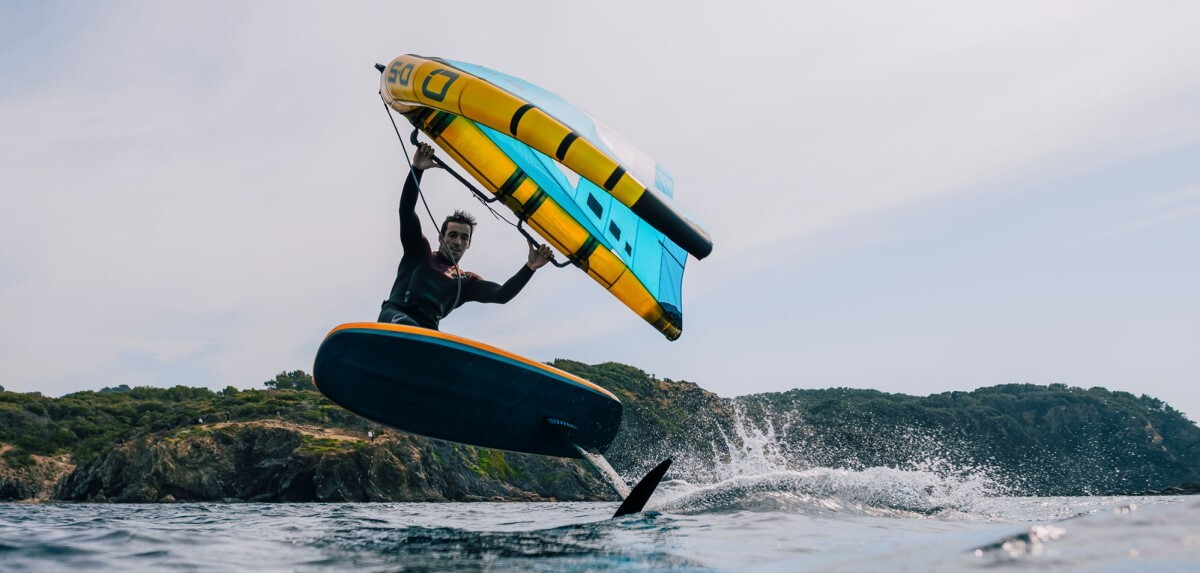
The AER takes the opposite tack. While it still uses quality materials, it takes a deconstructed approach and removes anything that isn't absolutely necessary. Not only does this cut down on cost, but it also makes the wing lightweight without using high-end materials like Aluula. Its scope was narrowed to freeride and especially wave, so its handles are soft and weigh even less than carbon hard handles.

How Can the AER Be So Lightweight at Its Price?
A lot of wings at the AER's price point are strictly beginner wings and will get you up and winging, but won't progress much past that, and you'll be looking for your next wing once you're comfortable on foil. There isn't anything wrong with that, but that just makes the AER's incredible floatiness in waves that much more impressive.
Part of the reason for that is the rapid improvement we've seen in the sport of winging since it became mainstream about 5 years ago. Because of their similarities to kites, wing designs and materials were able to piggyback on kiteboarding and develop high-quality products in a very short timeframe.
On top of that, Cabrinha has had some very nice wave wings and knows what you need to surf. They were able to take that knowledge and build a model that has everything you need and nothing you don't for having fun in the waves. It floats overhead in tacks and jibes. It drives upwind well. It's got good low end to get you up on foil. It's well-behaved when flagging so you can focus on riding the wave. The handles are soft but placed exactly in the right spots. They essentially went back to the basics to build a wing that feels as light in the hand as more high-performance wings.
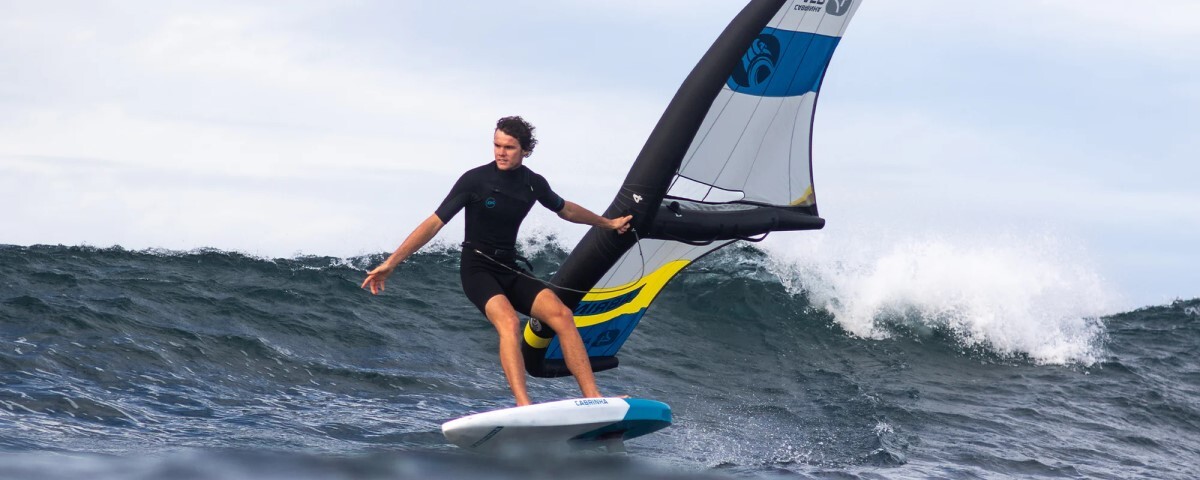
Why Might I Want the Flux V2 Ultra-X?
As amazing as the AER is, especially at its price point, the Flux Ultra-X still has its advantages. The performance is uncompromising with the Aluula frame, canopy with stiffening battens, and hard handles. It's stiffer, with a more direct feel. It's a fast wing that surfs and jumps well with decent low end and insane upwind. While it's not an Olympic-level race wing, you can certainly be competitive with the local crew.
The Flux Ultra-X is a tough wing to beat. While the AER excels in waves, the Flux checks all the boxes.
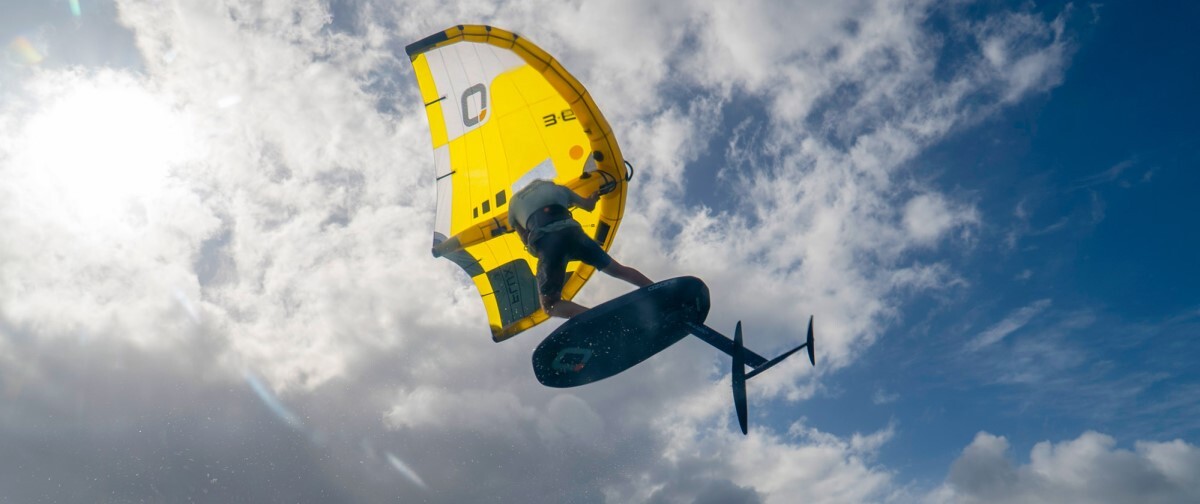
Should I Get a Whole Quiver of Aluula Wings?
If you've got the budget for it, they are indeed very nice wings to have access to. In the larger sizes especially, 5m and up, you'll get a lot of benefit for your money. The more material that's replaced with lightweight Aluula, the better. The difference in stiffness will be more apparent, as will the reduced drag due to the smaller leading edge diameter. All this adds up to better performance and a lower wind range, which is often why you're buying a bigger wing to begin with.
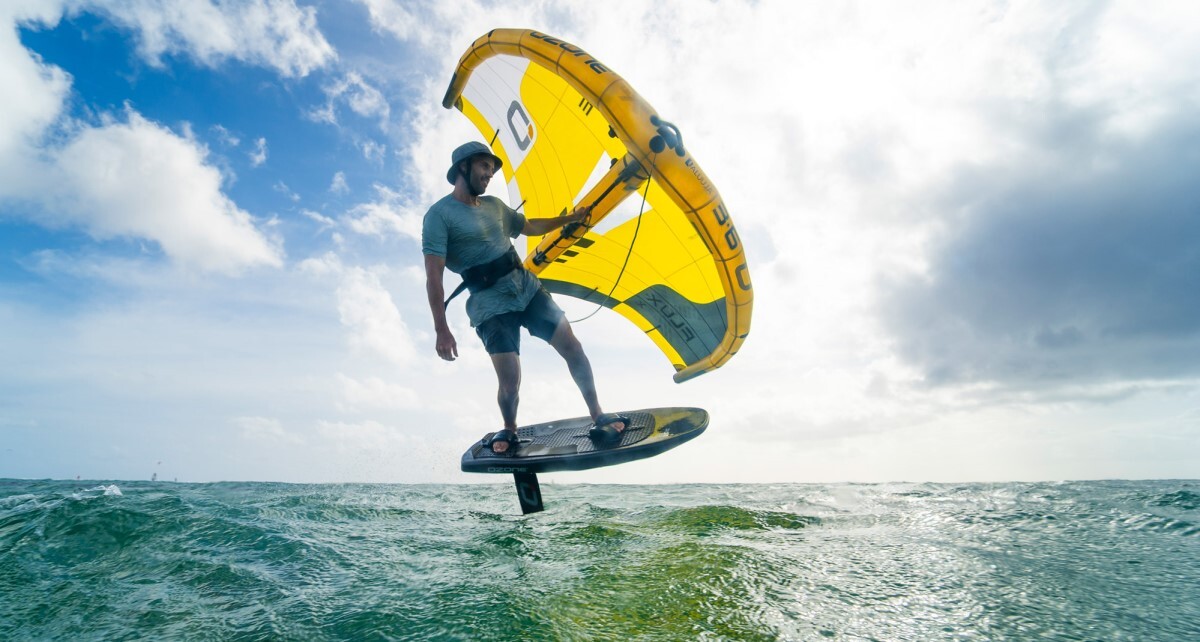
However, the difference in performance won't be as pronounced in the smaller sizes. The Flux V2 comes in a standard version as well, so that's a great option for your smaller wings if you like what the Flux offers but can only afford one Aluula wing.
Which Wing Is Right for Me?
If you're on a budget and primarily want to ride waves, this is an easy decision. The AER is built for the waves, which meshes well with its minimalistic design. You don't need a lot of bells and whistles to play in the waves: just a wing that'll get you there and then sit quietly while you surf.
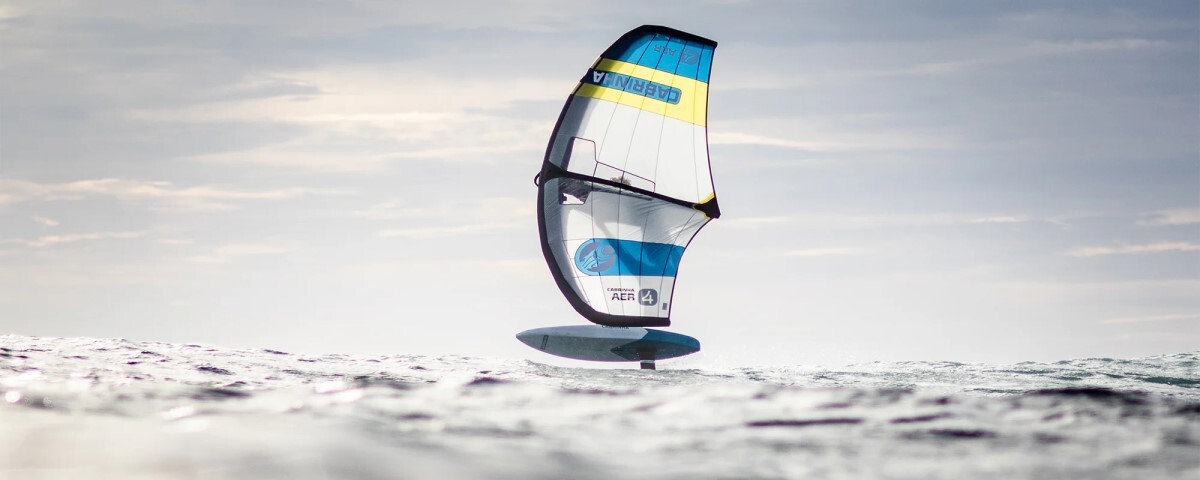
If you have the money and love riding waves, the decision is a bit harder. Both wings made our list of the top 4 wings for riding waves in 2025, so you really can't go wrong with either when it comes to getting in the surf.

If you want a fast wing with strong performance across the board, then the AER might not meet your needs, so if the Flux isn't in your budget, give the shop a call so we can recommend some wings in your price range that will give you the best bang for your buck.
Another thing to consider is wing longevity. Wing materials that are more rigid and stretch less won't be flexing as much while you're riding and pumping and should have a longer lifespan. If you can get three years out of your gear rather than a single season, suddenly that wing that costs twice as much is much more economical in the long run. Of course, your riding style will determine just how much of an effect this will have. If you're not riding overpowered, your wing may not experience much fatigue to begin with.
At the end of the day, you're going to have some great options at any price point. While you can certainly invest a lot of money into a setup if you want to, winging isn't a yacht club and it isn't just for pros. Wing development has come a long way, and as long as you're buying a wing from a reputable brand and not some random wing, it's going to work as advertised. It's just up to you to decide what you want out of your wing, and then we can help match you up with the gear that will leave you stoked. See you on the water!
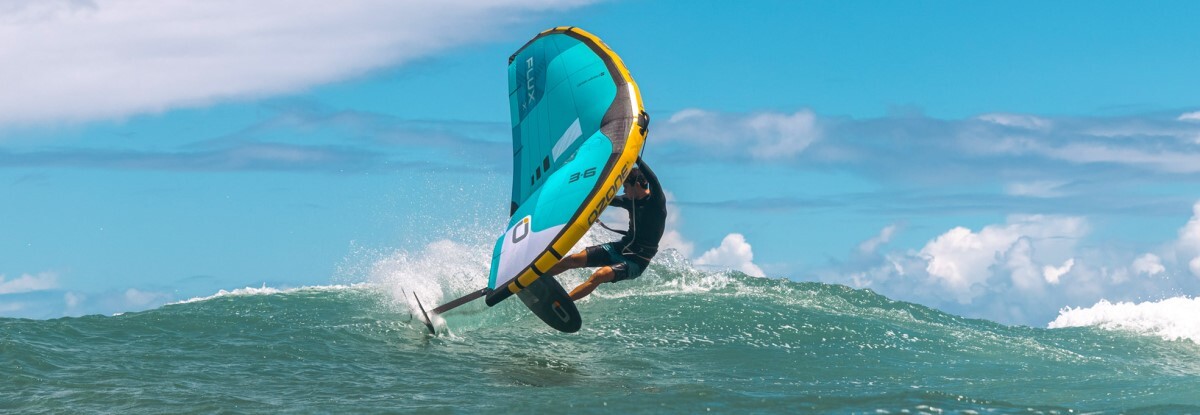
MACkite Subscription Links:
YouTube | Instagram | Spotify Oddcasts
Contact MACkite Below:
800.622.4655 | Kiteboarder@MACkite.com | LIVE Chat Messenger


Recent Posts
-
Alex Pastor Named CEO of Airush Kiteboarding
Airush Kiteboarding is entering a defining new era, one shaped by deep roots, proven performance, …26th Dec 2025 -
Cold Water Riding Tips from Tucker
Unless you're lucky enough to live somewhere that's warm year-round, your cold-weather options are …23rd Dec 2025 -
Why the Cedrus Forged Mast Is for Everyone
Tucker's had his hands on a Cedrus Forged mast prototype for a few months now, and he feels that i …18th Dec 2025

